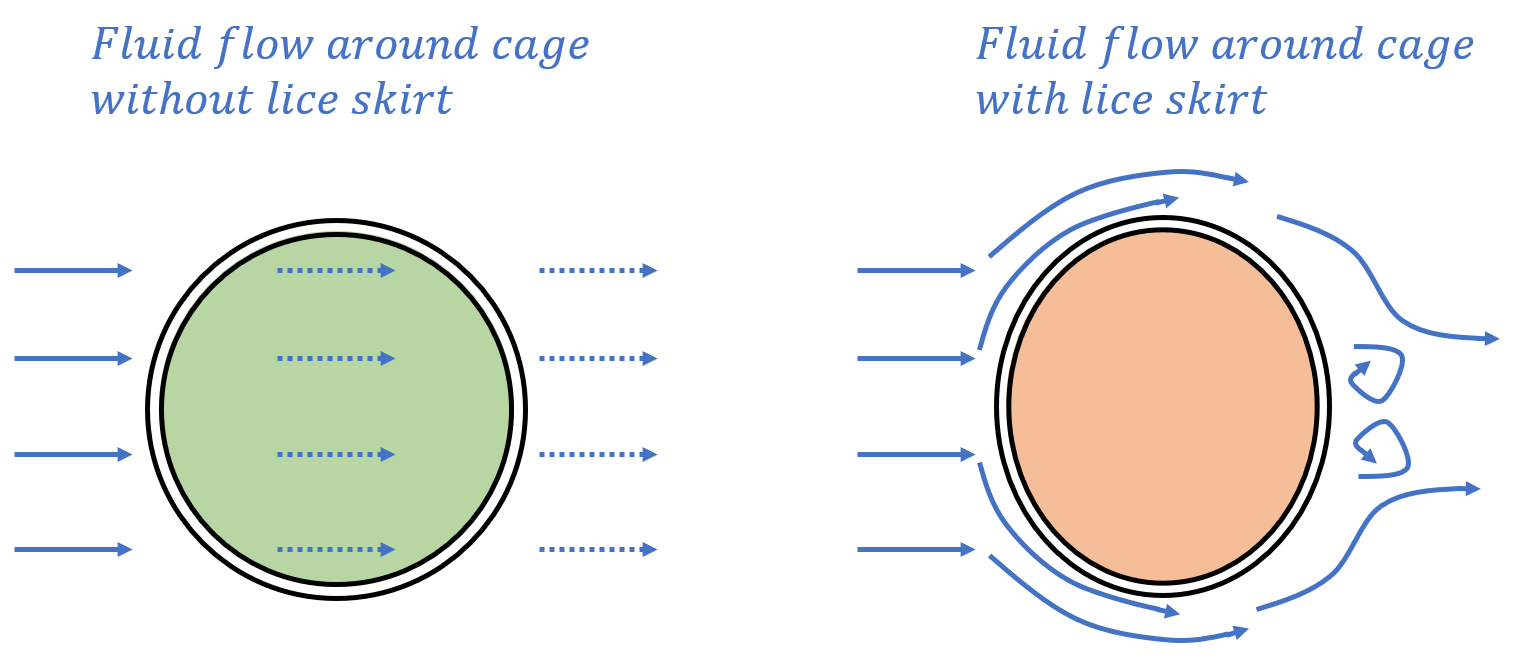Hydrodynamical principles
Last reviewed version: 2.19Let’s consider this from a hydrodynamical perspective. Conventional barriers such as nets have openings allowing water to flow through more or less unhindered.

Introducing a lice skirt, the water particles are hindered from flowing through, and must pass on the sides of the barrier, or below. Waves that interact will be accompanied by diffraction and deformation of the lice skirt. Diffraction is the process where waves spread perpendicular to the direction of wave propagation. These effects will cause an increased pressure on the upstream side and the lice skirt will be deformed. This is commonly known as hydroelasticity – a time-dependent effect, where structures deform under the influence of fluids.
The pressure-increase on the upstream side of the skirt will be transferred to the cage, and in turn lead to increase loads in the anchoring system. This is something to be aware of when planning an anchoring system at a fish farm facility.